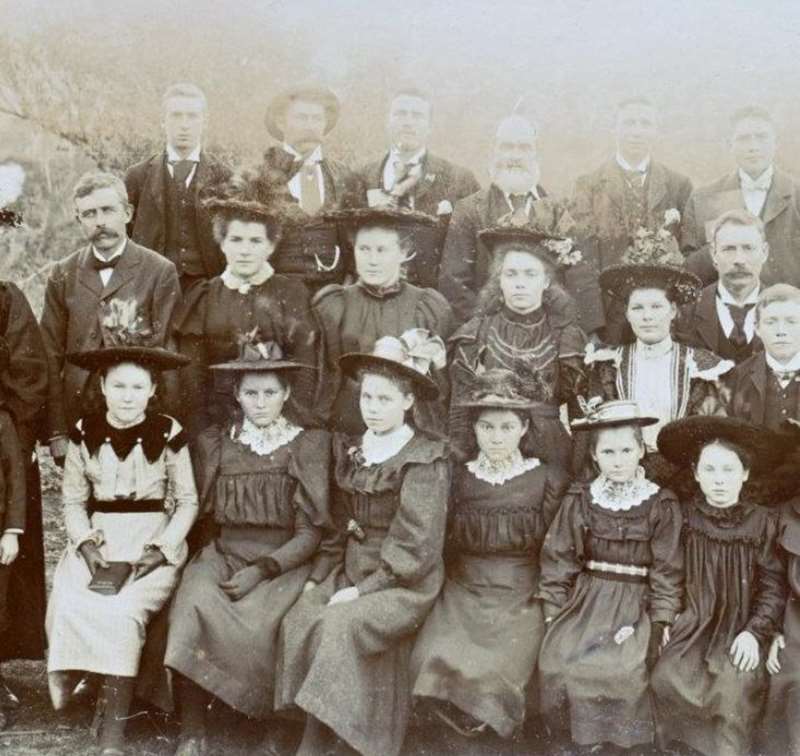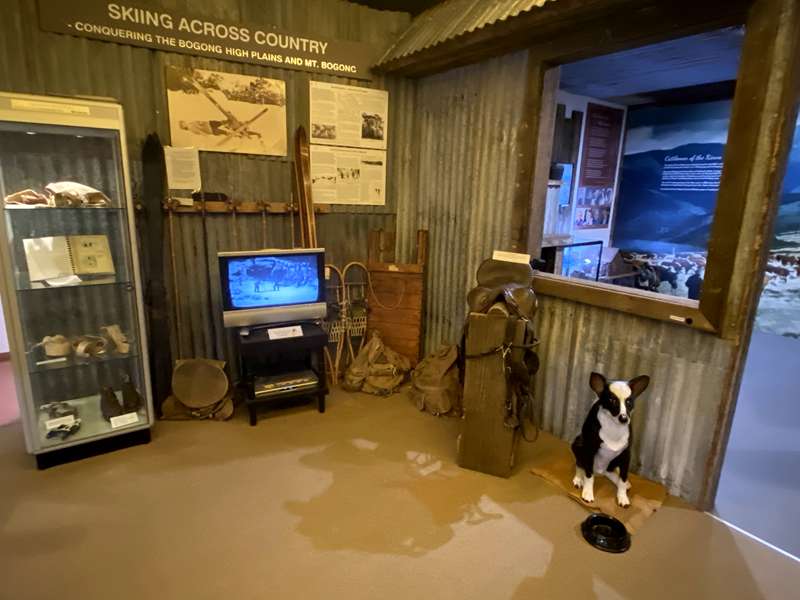Mount Beauty - Kiewa Valley Historical Society Museum


The Kiewa Valley Historical Society Museum, which is located inside the Mount Beauty Visitor Information Centre, has a number of permanent and rotating displays that span the region's history from its First Peoples to the present day.
The museum has permanent and temporary exhibitions, information walls, a photo gallery, a diorama of the Bogong High Plains, a model hydro system and two DVD screens which show the area's history and highlights, that tell our social history, natural science areas and technological developments.
The collection has many artefacts that show the history and cultural heritage of the first indigenous people. Along with artefacts from pioneer settlers of the Kiewa Valley and Mount Beauty lived, worked and socialised. Items such as photos, books, farming equipment, hospital equipment, technological equipment from the Kiewa Hydro Scheme, household items, plus oral histories, and genealogy books are in our collection. All the items in the collection have either historical, technological or aesthetic significance to the Kiewa Valley and have good interpretive capacity. Artefacts have to meet this assessment criteria before being considered to be added into the collection.

FIRST PEOPLES
For countless generations, to coincide with the annual bogong moth migration, Nations from around Victoria would travel to the alpine peaks to take part in ceremonies, feast on the nutritious moth, trade, settle disputes and perform marriages. Many of the trails ascending the mountains today are the same sacred routes created by the First Peoples and travelled only by those who had been invited and initiated.
The range's highest peak - Warkwoolowler in the Dhudhuroa and Waywurru languages - is Mount Bogong (1,984m), named today after the Dhudhuroa word for 'brown moth' bugung.
Life changed dramatically for the First Nations Peoples of the Kiewa with the migration of the pastoralists from NSW in the 1840s. Their arrival marked a period known as the Frontier Wars, and while lives were lost on both sides, this brutal period devastated the populations of the Dhudhuroa, Waywurru and Jaithmathang. Massacres, clandestine murders, arsenic poisonings, disease, malnutrition from the loss of their traditional hunting and fishing grounds, and the introduction of alcohol to the displaced and distraught communities was catastrophic.
By the time the survivors were corralled into the Aboriginal Reserve at Tangambalanga in 1864, there were 45 First Nations people from across the Kiewa, Ovens and Mitta Mitta recorded as receiving rations there; five surviving Jaithmathang where taken elsewhere and later incorrectly recorded as extinct. It is an uncomfortable truth that the lifestyles we enjoy here and elsewhere around Australia today come at the expense of these men, women and children who lost their lives. May they forever be remembered.
THE CATTLEMEN
By 1851, with the pastoralists firmly established throughout the Kiewa Valley, stockmen pushed higher into the Bogong High Plains, assisted by a network of paths that had existed for thousands of years.
Two stockmen from Wangaratta, Jim Brown and John Wells - employed to look after George Gray's cattle run at Cobungra - explored the Bogong High Plains, cutting cattle-droving tracks up to the pastures and naming most of its features as we know them today, including The Fainter, Pretty Valley, Mount Feathertop and The Razorback.
Over time, more cattlemen were keen to take advantage of the perceived benefits of grazing cattle in the High Country during the warmer months and huts began to spring up throughout the alpine ranges. Archaeological evidence suggests that many of these huts utilised campsites established by the First Peoples.
Families such as the Edmondsons, Maddisons, Ropers and Ryders would stay in their huts during the summer muster. The oldest surviving hut, Wallace's Hut, was built near Falls Creek in 1889 by the Wallace brothers and Jack Platt, Kyram Maurum, and Andy Damn, using snow gum slabs and woollybutt shingles.
While cattle no longer graze in the delicate alpine areas now protected by the Alpine National Park, cattle grazing and dairy farming in the fertile Kiewa River Valley remain an important part of the region's economy today.
The rich soils proved attractive for other agricultural pursuits and during the 1900s, tobacco farming, timber harvesting and milling were once thriving industries that have come and gone.
HYDROELECTRICITY
By the 1930s, the Kiewa Valley had become the site of what remains the second largest hydro-electric scheme in Australia.
As part of the scheme, the Victorian State Electricity Utility Commission (SEC) constructed the towns of Mount Beauty and Bogong Village to house its workers, which totalled 4,000 at the project's peak. When construction finished in the 1960s, Mount Beauty was handed over to the Bright Council - now Alpine Shire - allowing the town to develop the wonderful community that exists here today.
The Kiewa Hydro Electric Scheme took 26 years to build, from 1838 to 1961, with significant delays caused by the outbreak of World War II and recession that caused the project to be scaled back.
The scheme was privatised in the 1990s and purchased by Southern Hydro, and then acquired by AGL Energy in 2005. In 2009, AGL completed construction of Bogong Power Station (Number 2), which was part of the original plans.
The scheme's main reservoir, the 28-billion-litre Rocky Valley Dam at Falls Creek, sits at an elevation of 1,600m with a number of smaller dams and pondages below, including the regulation pondage in the centre of Mount Beauty. The reservoirs are linked by 18km of tunnels and 32km of aqueducts, connecting four power stations with a total capacity of 381MW.
Opening Hours:
Open 7 days a week, 10am-4pm. Closed Christmas Day.
Cost:
Entry is free although donations are appreciated.
Photos:
Location
31 Bogong High Plains Road, Mount Beauty 3699 View Map
✆ (03) 5755 0596 / 1800 111 885
Email Enquiry
Web Links
→ Kiewa Valley Historical Society on Facebook
→ kvhsmuseum.wixsite.com/kvhs-museum









